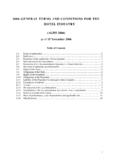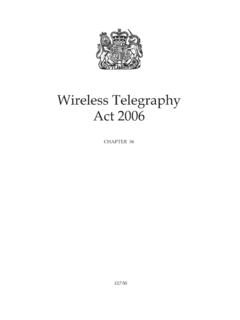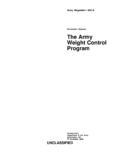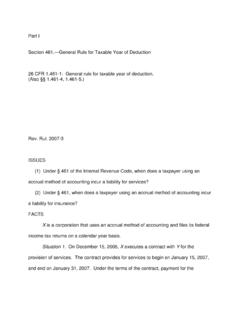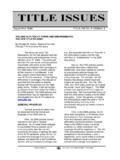Transcription of OFFICE OF THE INSPECTOR GENERAL - iom.int
1 OFFICE OF THE INSPECTOR GENERAL IOM EVALUATION GUIDELINES January 2006 TABLE OF CONTENTS Page Foreword 1 1. Introduction: Building an Evaluation Culture in IOM 2 2. Understanding what Evaluation is 4 Evaluation Types 4 Evaluation Methodologies 7 Other Related Notions 9 3. Managing and Conducting Evaluation: Norms, Standards and Criteria 11 Norms and Standards for Evaluation 11 Evaluation Criteria 14 The Reference Data 16 4.
2 Utilizing, Planning and Preparing Evaluations 18 Utilizing Evaluation: Accountability, Learning and Promotion 18 Planning an Evaluation 21 Preparing and Organizing an Evaluation 22 Annex 1 Bibliographical References 25 Annex 2 Other Types of Evaluation 28 Annex 3 Some Questions related to Evaluation Criteria 30 Annex 4 Evaluation Report Format 34 Annex 5 Self-Evaluation 36 Annex 6 Terms of Reference Format 46 FOREWORD In recent years IOM has demonstrated its capacity to meet numerous worldwide demands and adapt to new challenges in the evolving field of migration management. The dramatic increase in volume and scope of our projects and programmes bears witness to this.
3 But quantity is not the only valid measure of what we do. Quality and cost effectiveness are also key benchmarks. Evaluation plays a key role in ensuring accountability to donors by demonstrating that work has been carried out as agreed and in compliance with established standards. An evaluation culture must be fostered in order to gain the full benefit from what can be learned from what we do and how we do it, and ensure that we continue to build on our recognized strengths of flexibility, reliability and creativity. IOM's Member States and Donors support strong oversight functions capable of reviewing activities and providing performance feedback.
4 I created the OFFICE of the INSPECTOR GENERAL , which encompasses the Evaluation function, to meet this demand and, in order to ensure transparency IOM Evaluation s work is made available through its webpage on IOM's website. Just as IOM continues to increase and diversify its activities, so IOM Evaluation needs to adapt to the changes. OIG has produced new evaluation guidelines to replace those of 1998, an initiative that I fully support. The decision to conduct an evaluation is left to the responsibility and judgment of the project and programme managers. The guidelines present the benefits clearly: evaluation not only covers learning and accountability, but can be used to promote IOM's work, reinforce partnerships and bring innovation to its activities.
5 The primary users of the guidelines will be the Heads of MRFs, Chiefs of Missions and Project and Programme Managers but I strongly encourage you all to familiarize yourselves with the guidelines to know more about evaluation in IOM and enable you to discuss it knowledgeably with partners and donors. Brunson McKinley Director GENERAL The damage does not come from the finding of an evaluation, but from people trying to hide it. (Michael Q. Patton) 1. INTRODUCTION : BUILDING AN EVALUATION CULTURE IN IOM Efforts to promote evaluation in IOM already started at the beginning of the 1990s. The first IOM evaluation guidelines were published in 1992, briefly presenting evaluation and proposing an evaluation report format, but not including a clear evaluation policy and strategy.
6 The IOM s traditional movement services and resettlement programmes, provided under contractual basis and accounting for more than 70% of its operational budget at that time, were regularly reviewed through internal and donors audits. Evaluations were conducted in response to specific needs and requests. In 1998, IOM adopted an evaluation strategy to more actively promote the use of evaluation in its programmes and projects. The scope of activities carried out by the Organization was rapidly expanding to include a broad diversity of projects covering various aspects of migration management. In 1999, the Organization published its second Evaluation Guidelines containing also information on how to perform self-evaluation.
7 The OFFICE of the INSPECTOR GENERAL OIG, created in 2000, was tasked to continue the promotion of evaluation in IOM and to review the evaluation policy, strategy and guidelines when deemed necessary. In that perspective, OIG has been examining the relevance and effectiveness of the 1999 guidelines and considered, in 2004, that it would be opportune to update them to include the new evaluation trends agreed upon and implemented by the international community, and to adapt them to IOM s continuously evolving work. OIG also decided to revise specific evaluation requirements, in particular the use of self-evaluation and the systematic inclusion of an evaluation exercise in IOM project/programme documents.
8 OIG noted, for instance, that several projects in IOM were not too complex and were implemented for a one year period with relatively low budgets, which put into question the validity of a costly evaluation and made it inappropriate to plan a full fledged evaluation if the project was not extended. Detailed donor s reports were often deemed sufficient to draw conclusions on the performance and achievements of IOM smaller projects. It should also be noted that OIG introduced the internal rapid assessments into its core tasks that examine the performance and achievements of projects from a neutral outsider s perspective. Even if kept internal, the reports bring useful information and lessons on the implementation of projects, which can effectively replace small evaluations or self-evaluations in several cases.
9 OIG also concluded that some sections of the 1999 guidelines had not been well developed and that it was necessary to define and explain the evaluation concepts in more detail in order to avoid confusion in the terminology used by IOM field offices and in the definition of key terms. Other sections were, on the contrary, too detailed and not properly adapted to the targeted users, for instance a full section covering the conduct of the evaluation that is, in most cases, the work of consultants. 2 In order to promote evaluation and conduct self-evaluations, IOM had in the past organized regular evaluation training sessions during the Project Development training courses targeting project developers and Chiefs of missions.
10 In 2000, following a review of the IOM overall training strategy, the Project Development training was restructured and the timeframe shortened, and the evaluation module was no longer a main tool for the promotion of evaluation. New evaluation guidelines are an opportunity to fill the gap of training IOM staff and meeting the expectations of IOM staff tasked to discuss and use evaluation. The new guidelines will therefore concentrate on increasing IOM staff capacity to think in evaluative terms for a promotion of an evaluation culture, and on providing technical references that can clarify what evaluation is in order to facilitate discussions with partners and the donor community when developing projects or discussing the implementation of evaluation exercises.










